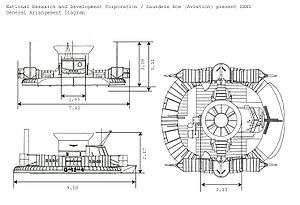SR.N1


The Saunders-Roe SR.N1 ("Saunders-Roe Nautical 1") was the first practical hovercraft.
Design
It was designed by Christopher Cockerell and built by Saunders-Roe on the Isle of Wight under the auspices of the National Research Development Corporation (NRDC). Powered by an Alvis Leonides radial piston engine that drove a lift fan, and using ducted air from the fan for propulsion, it first flew on 11 June 1959 in front of the assembled press showing its capability to cross both land and water.
Service
On 25 July 1959, the 50th anniversary of Louis Blériot's cross-channel flight, the SR.N1 serial G-12-4 crossed the English Channel from Calais to Dover in just over two hours. The crew were Captain Peter Lamb (pilot), John Chaplin (navigator) and Christopher Cockerell, the inventor of the momentum curtain as applied to the hovercraft principle.[1]
The SR.N1 later had a flexible skirt added in 1961 which greatly improved the effective depth of the air cushion. The following year an aft-facing Bristol-Siddeley Viper III jet engine, mounted on the rear of the decking behind the lift fan housing, supplemented the ducted-air propulsion produced by the piston engine, increasing the craft's maximum speed from 35 to 50 knots. The Viper installation followed an earlier installation of a Blackburn/Turbomeca Marboré of approximately half the Viper's thrust.
Models of the SR.N1 were available in both die-cast metal form in the Corgi Toys range, and as a 1:72 scale plastic construction kit from Airfix.
The SR.N1 is held by the Science Museum at Wroughton.[2]